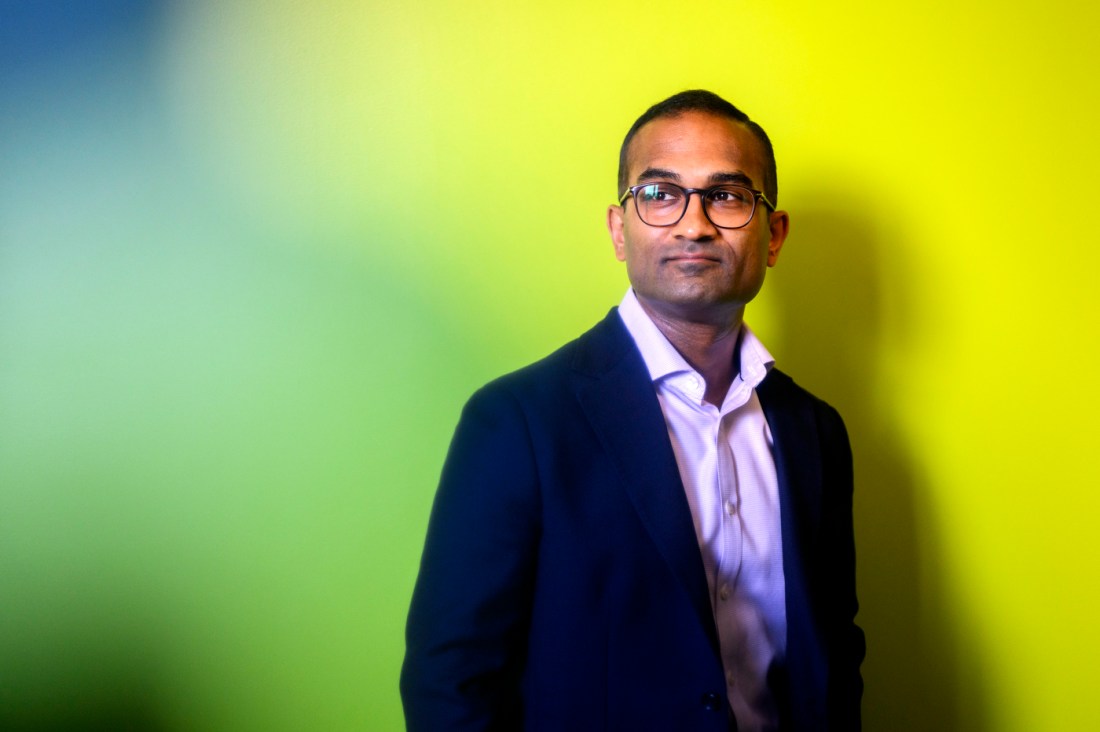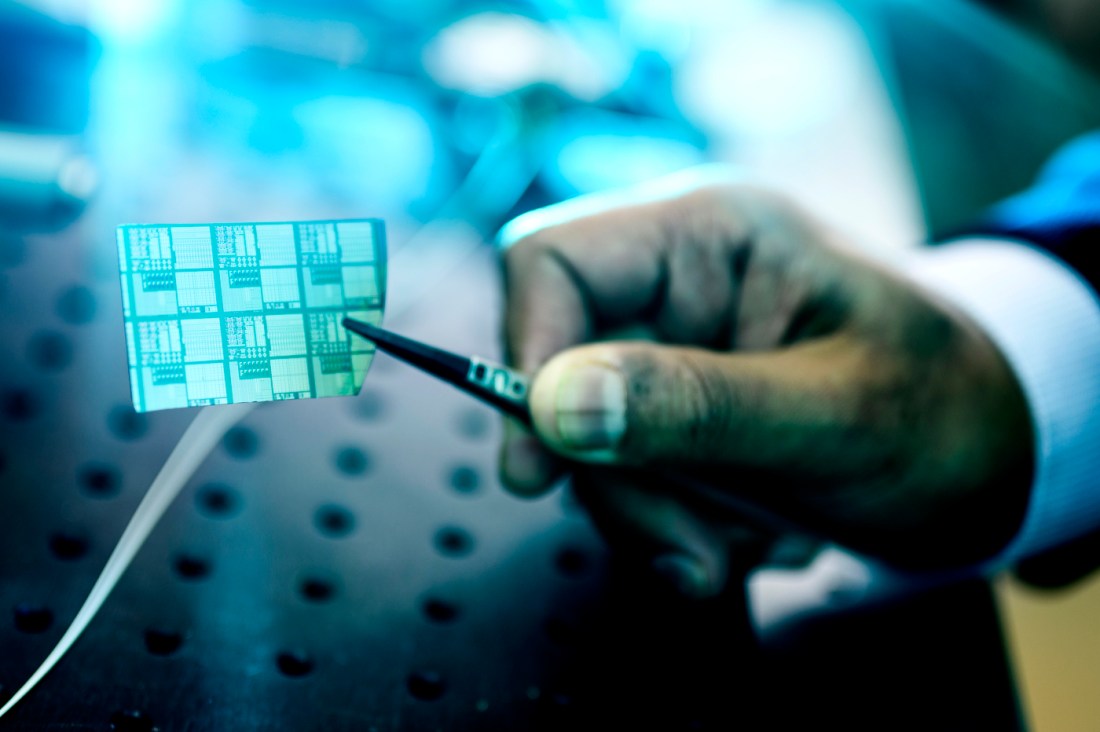All modern wireless communication — from radios to cellphones — engage in a process of translation. Radio frequency signals are picked up by an antenna, and components behind the antenna translate those frequencies into an electrical signal, whether analog or digital.
Called signal processing, devices “need to be able to distinguish the signal from the noise,” says Siddhartha Ghosh, an assistant professor of electrical and computer engineering at Northeastern University. “For you to be able to simultaneously support various channels of communication,” he continues, “like voice and text and data and all that stuff, you need to be able to isolate those bands.”
“Signal processing basically refers to the ability to isolate those signals from a noisy background using different approaches,” Ghosh says.

And the modern wireless world is very noisy. There are innumerable signals traveling through the air at any given moment — even your at-home Wi-Fi network uses radio frequencies to transmit information. It takes a feat of (micro) engineering to develop devices that can parse between these intermingling signals and convert them into something a device like your cellphone can then read as, say, a text message or incoming phone call.
Ghosh notes that a variety of components sit behind the antenna, called radio frequency front-end (RFFE) devices, like “filters, amplifiers and mixers.” The specific components Ghosh designs enable signal translation by manipulating “acoustic waves in solids,” he says.
Converting a radio frequency, “which is in the electrical domain,” Ghosh notes, into a physical vibration through a solid material, it travels as a sound wave across what’s called a “piezoelectric” material.
Because acoustic waves travel much slower than the speed of light, “the filters that are utilized using acoustic waves have certain benefits [over] the competing legacy technologies that would involve discrete components such as inductors and capacitors.”
Ghosh’s acoustic materials have the potential to replace these legacy components.
By relying on analog vibrations through a medium, Ghosh’s signal processors can sidestep previously critical electronic components while simultaneously incorporating their functionality.
Because “acoustic waves travel much slower than the speed of light,” he says, by about “five orders of magnitude,” this means that “the size of the devices can be very compact.”
But these aren’t the kind of sound waves you can hear.

Vibrating at the scale of a microchip, these analog vibrations can be read and converted to a digital signal by other components farther downstream.
Ghosh also works on “interfacing these acoustic waves with light that is guided on chip,” he says. Using acoustic waves in materials like aluminum nitride, Ghosh and his team can “route and control the flow of light,” modulating optical signals for more specialized needs.
Ghosh envisions “devices that can function in all of these domains,” processing multiple kinds of signals but which “don’t require increased complexity in fabrication and manufacturing,” bringing down both costs and device sizes.
Optical signal processing, modulated by sound waves, also has the potential to improve next-generation quantum computing.
In support of this research, Ghosh has received two prestigious early career awards: The Defense Advanced Research Projects Agency Young Faculty Award and the National Science Foundation (NSF) CAREER Award.
Ghosh says that these awards will drive not only technological innovation, but help him create a laboratory with some of the best talent, “attracting and hiring good Ph.D. students.”
“Building up a lab and generating a good culture around it that becomes a self-sustaining enterprise, that’s definitely a high priority,” he continues.
The NSF award will also support an outreach program to primary and high school students interested in engineering, and Ghosh also envisions developing a “library of components that can perform different circuit functions.”
“I feel incredibly privileged and also very fortunate,” Ghosh says of receiving the two awards only a few months apart. “To be perfectly honest, I think there’s been a little bit of luck involved.” “I think I’ve had fantastic colleagues,” he continues, “that helped me formulate and chew on ideas. And I think it’s really that that has resulted in some concepts that … hopefully will blossom into something more substantial over the next 10, 15 years.”
Noah Lloyd is a Senior Writer for NGN Research. Email him at n.lloyd@northeastern.edu. Follow him on X/Twitter at @noahghola.
